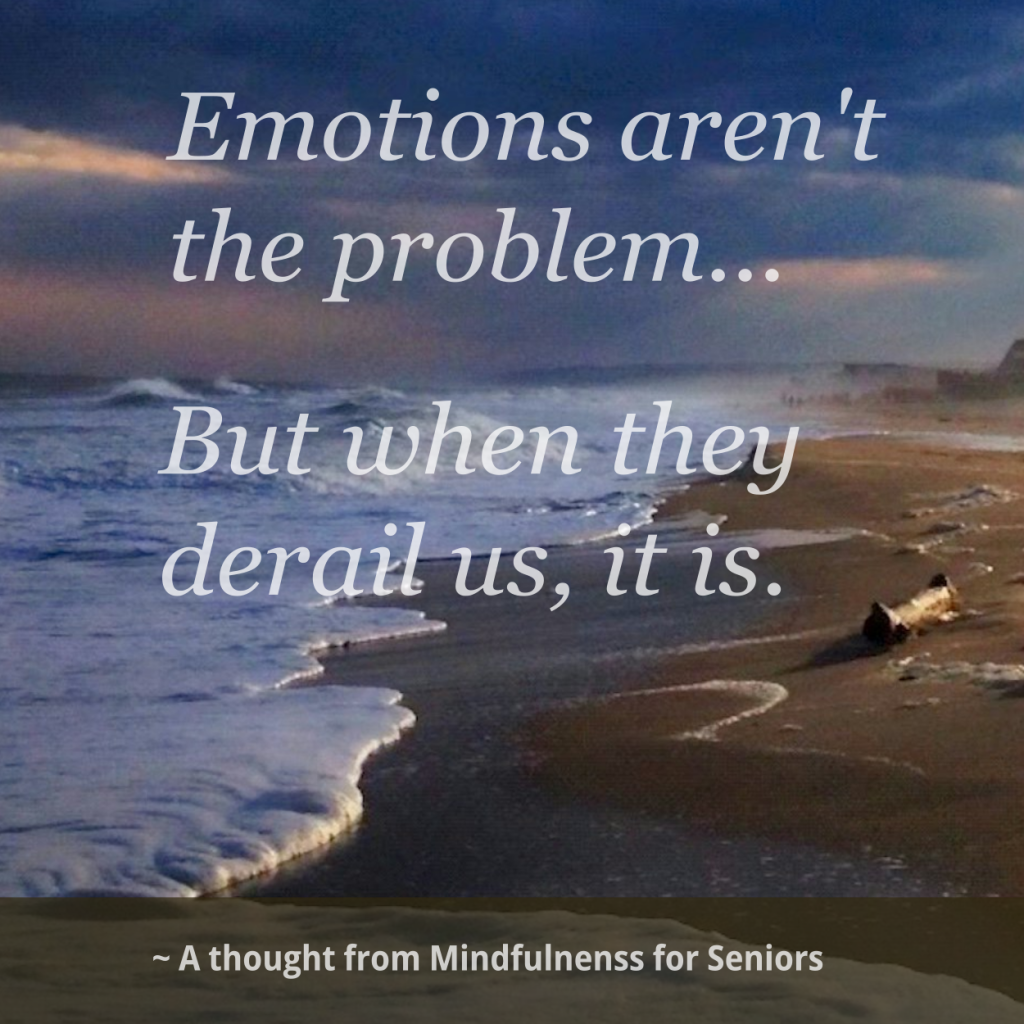Emotions Aren’t the Problem. But When They Derail Us, It Can Be.
The Challenge of When We See Emotions As Our Identity
Yesterday, we talked about a toolkit for emotional storms. We discussed why mindfulness isn’t a shield against big upsets or extreme feelings, but a cooling agent and fire extinguisher for the heat and flames they can bring.
The reason those tools are so vital is that emotions themselves aren’t the problem. The real issue is when we lack understanding about our emotions and see them as our identity. We then happily ride the train-of-upset to all sorts of painful destinations. Our feelings hijack our calm and derail our lives.
This is a core teaching in emotional intelligence (aka, EQ and EI). It’s backed by new research from thinkers like Professor Ethan Kross, one of many researchers that understand this new perspective. As he says, “Emotions are not our enemies!” Instead, they are seen as valuable information that we can all learn to use as a guide in life. The problem lies in the old view that emotions are things to be suppressed, fixed, or that they are “who we think we are” (mistaken as our self-identity).

From a Trajectory of Upset to a Path of Mental and Emotional Resilience
Imagine that an emotionally charged event is like the pull of a trigger. The initial feeling, whether it’s anger or anxiety, is the predictable result of that trigger-pull. But because we have an innate ability to rapidly react and choose, what happens next is completely up to us. As Kross puts it, while we can’t always control the initial trigger, we have “enormous control over the trajectory of the response“.
The power to change that trajectory comes from being able to separate the emotion from our identity. Instead of thinking, “I am an angry person,” we can shift to simply understanding and observing, “I am experiencing the feeling of anger,” which is exactly where even the simplest of mindfulness techniques can help. This small shift in perspective is everything. It transforms a fixed part of our self-identity and upset into a fleeting, dynamic experience, like watching a stream float by or the traceless path of a bird in the sky.
But what if you’re so overwhelmed that you can’t even make that shift? This is where your new M4S toolkit comes in, and you can also read the blog post Navigating Emotional Storms.
Your Toolkit for After the Flames of Upset Have Passed: Building Resilience
Mindfulness as Part of Our Emotional GPS
After the immediate heat of an emotional upset has cooled, these next tools are our aids for navigating the labyrinth of our emotional layers. They are designed to help us process what happened so we can build a reliable resilience for future emotional upset or upheaval. You’ve already seen (hopefully) the “fire extinguisher” from yesterday’s post; now it’s time to find out what started the fire in the first place.
This following approach is based on the problem-solving technique developed by Sakichi Toyoda and used within the Toyota Production System—it’s called the
“5 Whys Root Cause Analysis“. We’re adapting it here to explore our internal world.
Here’s that simple framework for self-inquiry that helps you go from reacting to understanding:
- Ask the Right Questions: Instead of just dwelling on what happened, ask yourself a series of questions (we recommend 5) to get to the root of the issue. Use Distanced Self-Talk, a science-backed technique, to guide this process. For example, the voice in your head might say:
- “Blair, why are you so upset about this?”
- “Is your upset similar to other upsets?”
- “What situation or interaction is this reminding you of?”
- “Can you remember when in your life these kinds of reactions began?”
- “What is the core feeling you are experiencing (Fear? Disrespect? Being unheard? Etc.)?”
- Identify the Core Feeling: The surface emotion (like frustration) is often a sign of a deeper, more vulnerable feeling. Was the upset really about a situation, or was it about feeling unheard or disrespected?
- Recognize the Pattern: Do these reactions seem familiar? Are they a mental pattern or thinking habit you’ve noticed before? Are you able to understand where you learned this behavior or pattern? Identifying these patterns and emotional habits is the first step toward changing them.
Our ability to use this “emotional GPS” is what ultimately helps us respond thoughtfully instead of reactively. It’s the key to shifting an emotional trigger from a source of damage loss of control, into an opportunity for growth, meaningful change, and personal resilience.
Featured Image for this post is courtesy of Clay Leconey from Unsplash.
Want to learn more? Sign up for our free inspirational bi-weekly newsletter or download our 100% free “A Taste of Mindfulness for Seniors” PDF (no email required).
Embrace Your Journey with Kindness
Remember, your mindfulness journey is yours alone to shape. It’s a path of gentleness, curiosity, and self-compassion. Even a single mindful breath can be enough to transform your perception and open you to a calmer, more joyful way of experiencing life. So, take a breath, be kind to yourself, and enjoy the ride!
Disclaimer: The information provided in this article is for educational purposes only and is not intended as a substitute for professional medical or mental health advice, diagnosis, or treatment. The author is not a licensed medical or mental health professional. Please consult with your physician or a qualified healthcare provider with any questions you may have regarding a medical condition.

